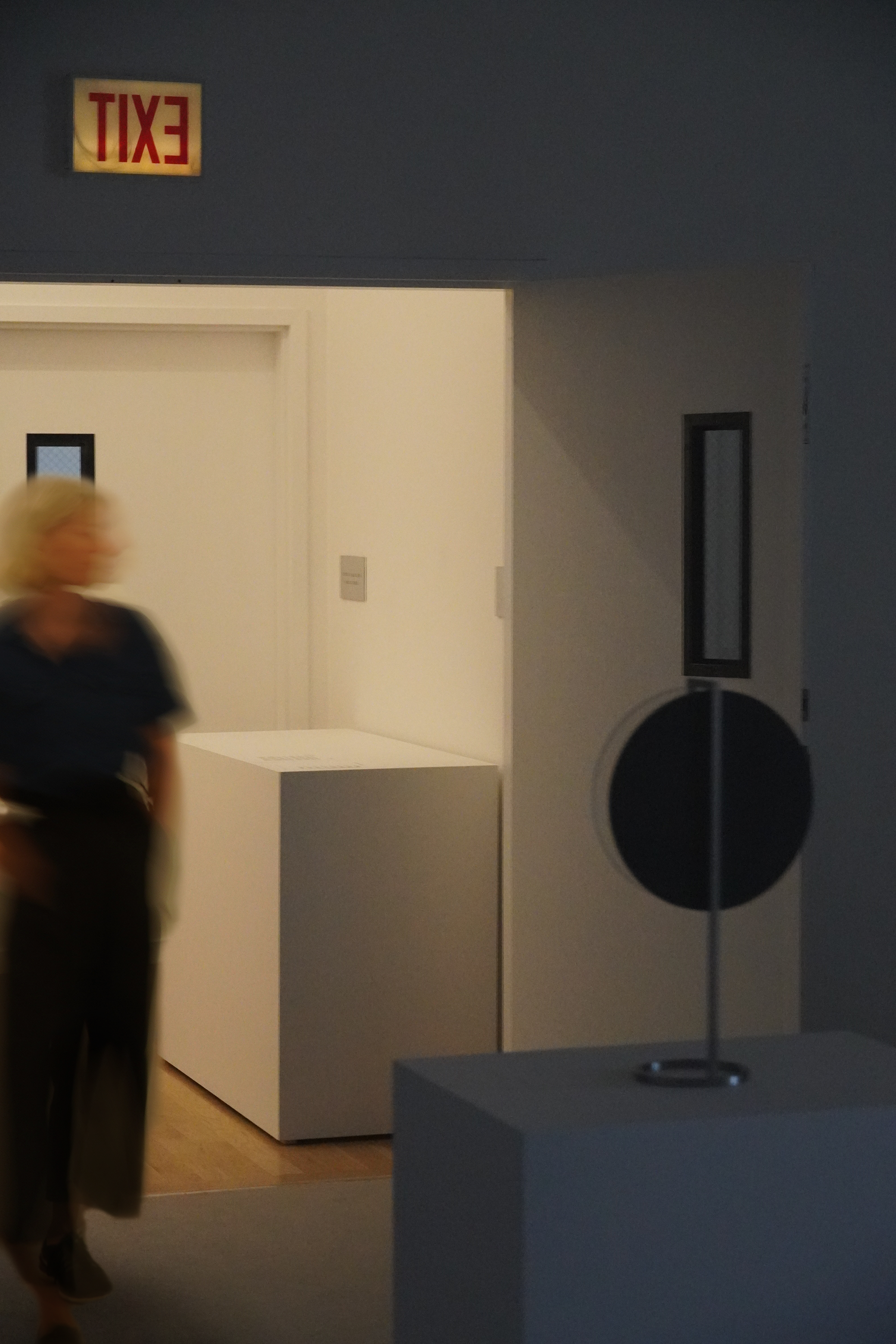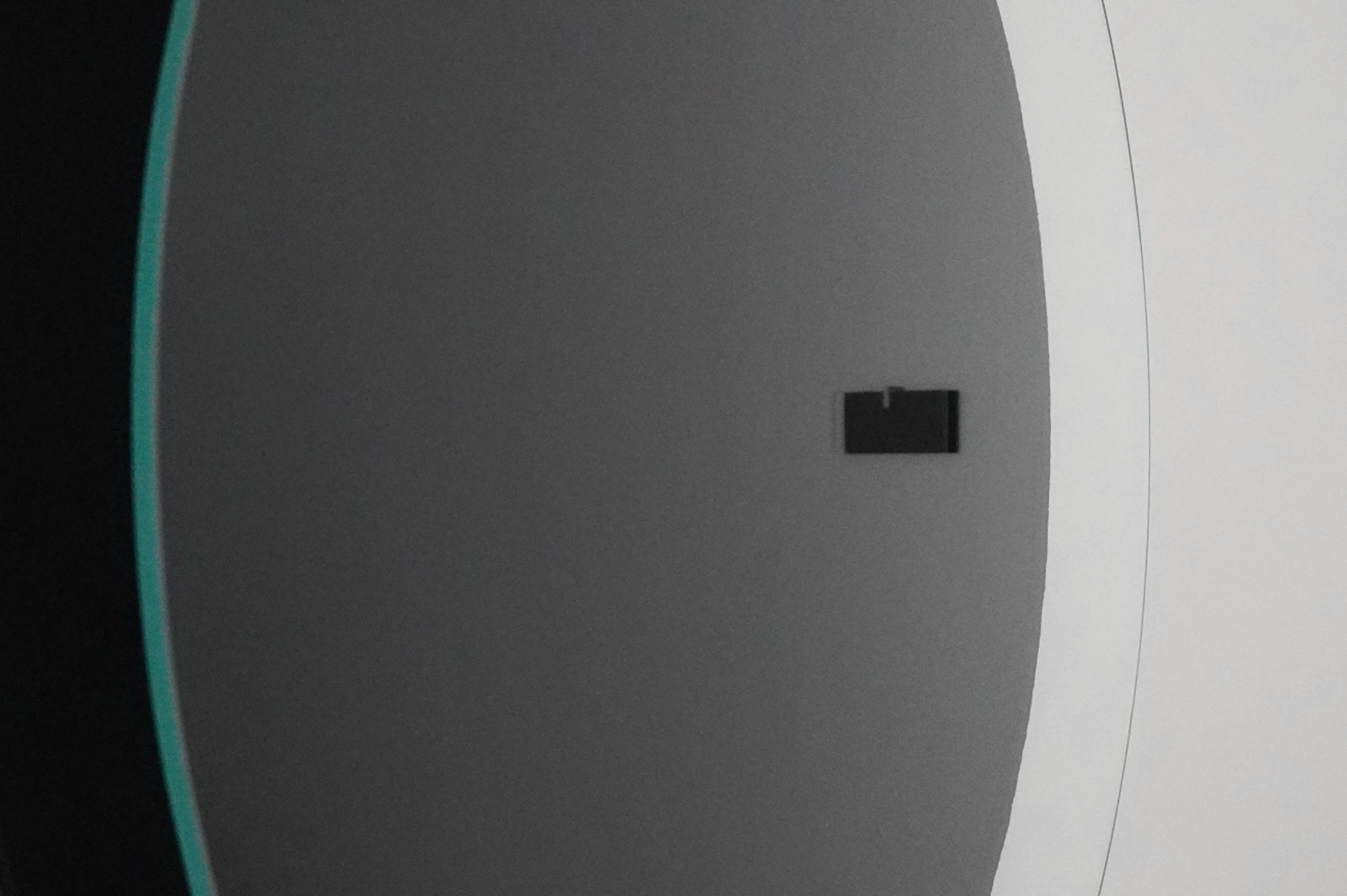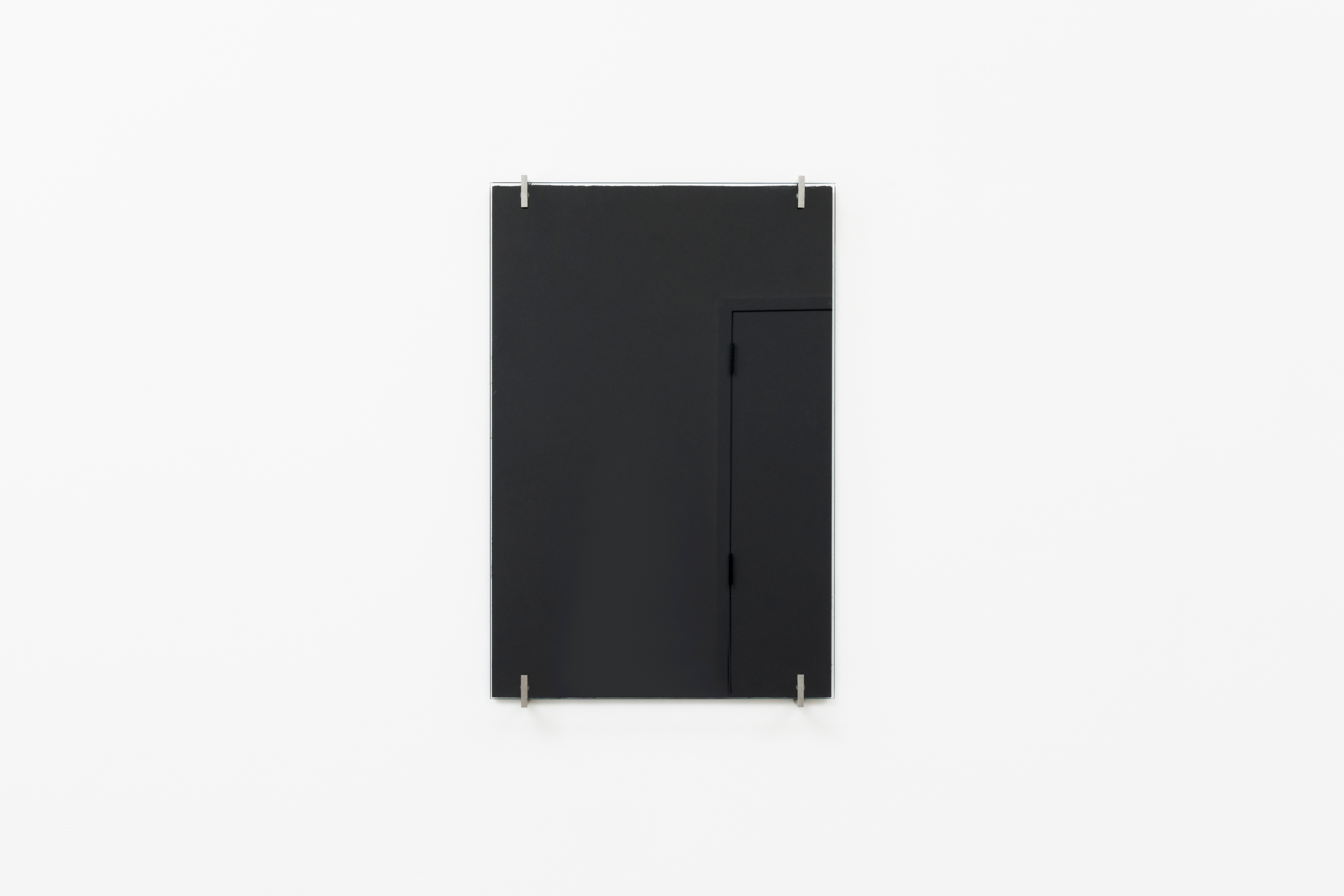Reflection: Literal and Phenomenal
Contributor
10 • Reflections
In our domestic spaces, mirrors appear as framed views. They are built in relation to the human body: a cosmetic mirror is small and encircles the face; a full-length mirror is tall and captures the chest, abdomen and legs; a medicine cabinet outlines the bust and includes the head and shoulders. Opening this cabinet’s door against another bathroom mirror reflects both of their frames infinitely, coiling inward until their edges disappear into a haze.
When applied to large surfaces, mirrors are architectural tools used to conceal unpleasant infrastructure or to expand the perception of space in narrow quarters and corridors. Camouflaging an overbearing column, here, distracting us from an uncomfortably low ceiling, there. When a room is pivoted away from a scenic view, mirrors transform banal walls into open vistas that would otherwise be unattainable. Mirrors produce literal reflections, lucid, picture-like images that offer a sense of erasure, of release, of something magical.
Our penchant for sheen and gloss, which psychologists attribute to a basic human instinct of finding water, has promoted a wide-ranging palette of shiny materials with varying reflective properties. While typical mirrors are commonly cut from silver-coated glass sheets, polished granite, acrylic panels, glazed ceramic tiles or lacquered wood render vague, low-resolution reflections. Multiplied by an abundance of metal and glass in contemporary cities, reflection is now a condition of viewing with nuanced interpretations.
On a sunny day, we glance at glass storefronts. With no intention to see what takes place within, we comb our fingers through tufts of hair, adjust our bags, tuck in loose shirt tails – directly looking at reflections of ourselves. Reflection is produced not through a silver-coated sheet, rather an alchemy of light and surface, as transparent glass transforms into a mirror. Bouncing light from façade to sidewalk, window to neighboring building, soft blurs glimmer across the city, tracking the movement of the sun.
Against a dim night sky, artificial illumination spotlights domestic life on an urban stage, allowing others to peer through apertures to watch your television program and dinnertime routine. From within, the window again morphs into a mirror, obstructing the view outside and displaying ghostly figures of the interior landscape. When reflections vanish as quickly as they emerge, in a window on a brightly lit street, or a puddle after a rainstorm, their phenomenal presence heightens our sense of visibility and exposure, and our spatiotemporal awareness in the built environment.
This quality of reflection is the subject of Reflections of a Room, a solo exhibition at Volume Gallery. Eight wall-mounted and freestanding pieces translate familiar, mirrored objects as windows viewed at night. Borrowing from the proportions of everyday objects like a cosmetic mirror or medicine cabinet, the pieces delaminate the typical layers of a mirror. Detached from a shadow of black felt, low-iron glass is suspended by brushed and painted stainless steel armatures, positioned up, down and side to side.
As viewers approach each object and the glass and black felt align in their perspective, reflections of themselves and the room behind materialize. To look closely at the object is to observe details in the room that may previously have gone unnoticed. Neither window nor mirror, we recognize this quality of reflection, of densely layered surfaces, in the opaque, disorientating ways we interpret information today.
The exhibition is situated in a larger constellation of experiments across art and architecture that foreground materiality, or the perception of our surrounding through a material lens, and the simple wonder reflections instill. More than a device for deception in architecture, phenomenal reflection is a dynamic tool for building with thoughtful intention, whose silent force awakens us from constant noise.





Photos 1-4 by Abigail Chang. Photo 5 by Volume Gallery.